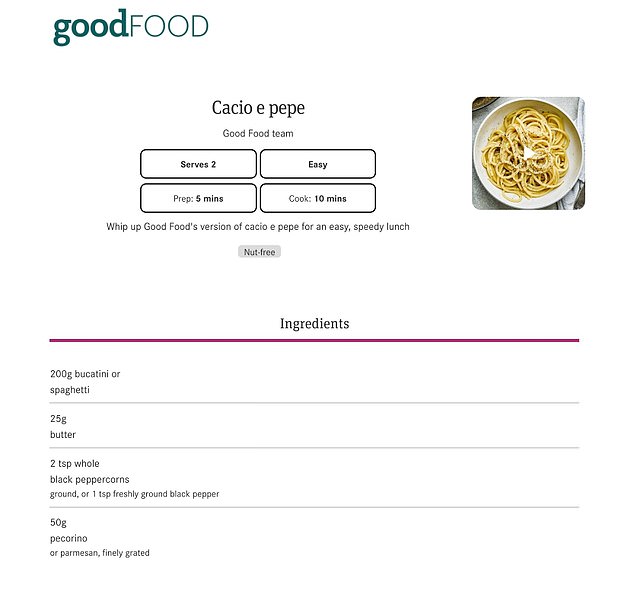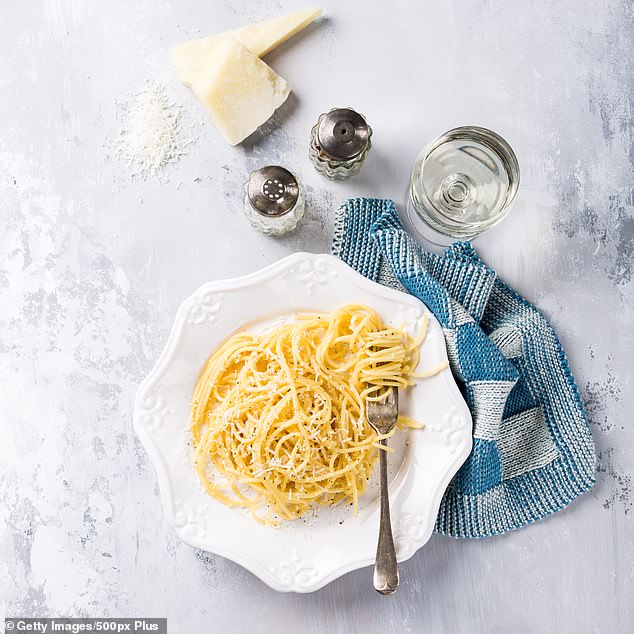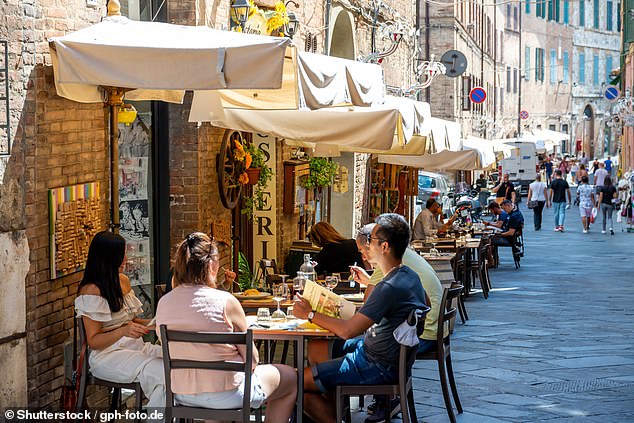A UK recipe for a popular Roman pasta dish has sparked fury in Italy after it allegedly botched the meal by adding two additional ingredients.
The cacio e pepe recipe on Good Food, formerly owned by the BBC, branded the traditional pasta a ‘store cupboard favourite’ and advised readers they could whip it up using four simple ingredients – spaghetti, pepper, parmesan and butter.
But Italians have hit back with fury. The real deal, they say, uses just three ingredients – tonnarelli pasta, black pepper, and pecorino Romano.
Now, Fiepet Confesercenti, the leading trade association for Italian restauranteurs, is demanding an official correction, claiming the post misleads readers and disrespects Italian tradition.
They have even raised the issue with the British Embassy in Rome in a bid to ‘safeguard this iconic dish’.
The blunder, which has been online for months, only recently caught the attention of furious food purists – despite a few sharp-eyed readers calling it out earlier.
But a video accompanying the recipe showing a thick knob of butter melting into a pan seems to have been the final insult.
Claudio Pica, head of the Rome branch of Fiepet Confesercenti, said the association was ‘astonished’ to see the recipe on such a popular and esteemed food site, adding that letters have been sent to Immediate Media, the site’s owner, and the British ambassador to Rome, Edward Llewellyn.

The cacio e pepe recipe on Good Food advised readers they could whip up the dish using four simple ingredients – spaghetti, pepper, parmesan and butter

The real deal, Italians say, uses just three ingredients – tonnarelli pasta, black pepper, and pecorino Romano

Fiepet Confesercenti, the leading trade association for Italian restauranteurs, is demanding an official correction, claiming the post misleads readers and disrespects Italian tradition. Pictured: Diners enjoy a meal in the sun in Florence, Italy
‘This iconic dish, traditionally from Rome and the Lazio region, has been a staple of Italian cuisine for years, so much so it has been replicated even beyond Italy’s borders,’ he said.
‘We regret to contradict the historic and authoritative British media, but the original recipe for cacio e pepe excludes parmesan and butter. There are not four ingredients, but three: pasta, pepper and pecorino.’
He admitted that while chefs might experiment from time to time, misrepresenting such a dish as the authentic original is a step too far.
Unsurprisingly, Italian media has been gleefully lapping up the culinary scandal.
Rome’s Il Messaggero quipped: ‘Paraphrasing the famous British anthem ‘God save the king’, Rome restaurateurs are now saying: ‘God save the cacio e pepe’.’
But this is not the first time foreign cooks have tampered with Italian classics and been burned.
In 2021, the New York Times sparked a similar uproar with its ‘smoky tomato carbonara’ – a version of the traditional Roman dish that included tomatoes.
Despite backlash from Coldiretti, Italy’s powerful farming lobby, the recipe resurfaced again in 2023 – suggesting the US paper was unbothered by Italian disapproval.
And Italians aren’t shy about calling out ‘crimes’ against their cuisine, from chicken stirred into pasta to pineapple on pizza.
The New York Times also once stirred outrage in the UKby describing the Yorkshire pudding – a Sunday roast staple – as a ‘large, fluffy pancake’ suitable for breakfast, lunch or dessert.












